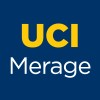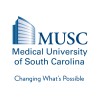
Nutrition and Aerobic Exercise in Chronic Stroke
StrokeStrokes are very common in the United States and occur more in the elderly. The number of strokes is likely to double in the next 50 years. Many stroke survivors are sedentary and have a poor dietary intake, which results in abnormalities in fuel utilization (eg carbohydrate versus fat). This study will examine the effects of dietary modification and treadmill training on fuel utilization and physical function. We will study skeletal muscle oxidative stress in chronic stroke patients and the ability to employ dietary modification and exercise training to reverse these abnormalities in this ethnically diverse population.

Effect of Robot Rehabilitation Exercise Training on Motor Control After Stroke
StrokeStroke is a leading cause of neurological disability worldwide, often causing significant weakening and paresis of the affected arm. National spending on post-stroke rehabilitation is project to expand 20% to 35% through 2010. As a new tool for therapists, robotic stroke therapy devices have the potential to be a cost-effective device aid to physical therapy and enable novel modes of exercise not currently available. While recent studies have shown chronic patients benefit from repetitive practice, it is not clear whether they improved via a reduction in impairment or increased functional compensation because there is a lack of standard treatment and scales to assess rehabilitation efficacy in chronic stroke patients. This study aims to reconcile difference performance measurements in robotic rehabilitation to assess the outcome of robotic rehabilitation training.

SITS (Safe Implementation of Treatments in Stroke) Open Artery by Thrombectomy in Acute Occlusive...
Ischemic StrokeIschemic stroke, i.e. irreversible damage of a part of the patient's brain, is caused by the formation of blood clot in the major vessel which gives blood supply to a certain part of the brain. At early time, within the first 4,5 hours, the conventional treatment is to try to dissolve this blood clot with a medication ("thrombolytic drug") which is administered to the blood through the needle in the vein. If the clot still remains there, additional treatment is possible - going directly to the clot via artery and taking it out with a special device. Patients may be included even if they are not treated with intravenous thrombolysis because of contraindication or other reasons. The purpose of the present study is to evaluate the benefit and safety efficacy of thrombectomy and standard stroke care in clinical routine treatment of acute occlusive stroke compared to standard stroke care only.

Cord Blood Infusion for Ischemic Stroke
StrokeThis is a phase one study investigating the safety of a single, intravenous infusion of banked allogeneic umbilical cord blood in subjects following an acute ischemic stroke. The cord blood infusion must be given within 3-10 days of the stroke. Follow up phone calls will occur at 1, 6, and 12 months post-infusion, and will include telephone surveys on post-stroke rehabilitation and functioning. A follow up clinic visit at 90 days will include a neurological exam, MRI, and blood tests.

Telerehabilitation in the Home Versus Therapy In-Clinic for Patients With Stroke
StrokeThe current study will test the effectiveness of a novel home-based telehealth system designed to improve motor recovery and patient education after stroke. A total of 124 subjects (the number may be larger depending on the rate of subject dropout) with arm motor deficits 4-36 weeks after a stroke due to ischemia or to intracerebral hemorrhage will be randomized to receive 6 weeks of intensive arm motor therapy (a) in a traditional in-clinic setting or (b) via in-home telerehabilitation (rehabilitation services delivered to the subject's home via an internet-connected computer). The intensity, duration, and frequency of this therapy will be identical across the two groups, with subjects in both treatment arms receiving 36 sessions (18 supervised and 18 unsupervised), 80 minutes each (including a 10 minute break), over 6 weeks. The primary endpoint is within-subject change in the arm motor Fugl-Meyer (FM) score from the Baseline Visit to 30 Day Follow-Up Visit. Arm motor status is the focus here because it is commonly affected by stroke, is of central importance to many human functions, and is strongly linked to disability and well being after stroke.

COMPASS Trial: a Direct Aspiration First Pass Technique
Ischemic Cerebrovascular AccidentIntravenous (IV) tissue plasminogen activator (tPA) administration has been shown to be safe and effective for treatment of AIS within 3 hours of symptom onset, and newer evidence has shown potential benefit out to 4.5 hours. Mechanical thrombectomy for AIS patients has been shown in clinical trials to be safe up to 8 hours after symptom onset. Recent trials utilizing advanced imaging to identify patients with large vessel occlusions amenable to intra-arterial thrombectomy (IAT) have shown superiority endovascular therapy over medical therapy to result in improved patient functional outcomes. Pilot data utilizing the ADAPT approach has shown superior technical results with similar functional outcomes while lowering procedure time and device costs versus traditional stent retriever as a first line therapy approaches

Improving Motor Stroke Recovery Using Patient-tailored Non-invasive Brain Stimulation
StrokeMany individuals are often left with problems moving their arm and hand, months to even years after a stroke. Recent progress in research suggests the application of non-invasive brain stimulation, such as transcranial direct current stimulation (TDCS), in conjunction with rehabilitation exercises can further improve a person's ability to move after stroke. However, the problem is that this doesn't work for everyone, and researchers do not know why. One reason may be that TDCS is currently applied using a one-size-fits-all approach. Researchers apply the same type of TDCS to everyone, assuming the stroke affects everyone in the same way. But, researchers know this is not the case. For example, each person will likely have different amounts of damage to brain regions that control movements. A better understanding of how the stroke uniquely affects a person's brain will help us to know which is the correct type of TDCS to apply for that person. Therefore, the objective of this research is to determine whether the amount of damage to brain regions that control movements can predict which type of TDCS will be more effective to help a person improve their ability to move. Participants will undergo 1 session of magnetic resonance imaging, and three sessions of TDCS.

Atorvastatin in Acute Stroke Treatment
Ischemic StrokeRecent clinical trials and meta-analyses of b-hydroxy-bmethylglutaryl coenzyme A (HMG-CoA) reductase inhibitors (statins) have demonstrated a significant reduction in ischemic stroke in patients with a history of coronary artery disease, both with and without elevations of serum cholesterol. Recent data suggest that statins have other beneficial properties in addition to the retardation of atherosclerosis. Asahi et al demonstred that Statins increased eNOS and tPA mRNA levels but did not change mRNA levels of PAI-1 and that In eNOS knockout mice, atorvastatin reduced the volume of ischemic tissue and improved neurologic outcomes after arterial occlusion by blood clot emboli. In addition to their lipid-lowering effects, it has been speculated that statins may also have beneficial effects on cerebral circulation and brain parenchyma during ischaemic stroke and reperfusion. Aslanyan et al reported that statin use was associated with reduced mortality at 1 month during the follow-up. In patients with recent stroke or TIA and without known coronary heart disease, 80 mg of atorvastatin per day reduced the overall incidence of strokes and of cardiovascular events, despite a small increase in the incidence of hemorrhagic stroke period . Recently the investigators group reported that lacunar strokes compared to nonlacunar ones exhibited significantly lower plasma levels of TNF-α and IL1-β, P-selectin and ICAM-1 24-72 h and 7-10 days after stroke onset (4). At extracranial arterial territories, inflammation plays a crucial role mediating all the stages of the atherosclerosis process . Similarly, thrombosis and defective fibrinolysis may also contribute to the progression of atherosclerotic lesions . Interestingly, both mechanisms might have a relevant role in the pathogenesis of intracranial large artery atherosclerosis and ischemic stroke Moreover our group showed that Patients with cardioembolic and atherothrombotic stroke subtypes showed significantly higher median plasma levels of TNF-α, IL-6, IL-1β whereas the lacunar subtype showed significantly lower median plasma levels of TNF-α, IL-6 and IL-1β and that immunoinflammatory marker plasma levels are significantly related to ischemic lesion volume. A meta-analysis showed that statins may possess antithrombotic property because these drugs were reported to reduce periprocedural infarction in patients undergoing percutaneous coronary intervention . This clinical benefit was detected after median, 0.5 days of treatment with statins (indicating that statins could potentially exert an antithrombotic effect even earlier than supposed from pharmacological studies. Violi et al recently showed the first evidence that atorvastatin acutely and simultaneously decreases oxidative stress and platelet activation by directly inhibiting platelet Nox2 and ultimately platelet isoprostanes and thromboxane A2 so providinf a rationale for the use of statins to prevent or modulate coronary thrombosis. Whereas recent data suggest that inflammatory reactions are involved in the pathogenesis and progression of cerebral ischaemia , no study has evaluated effects of atorvastatin 80 mg/day after a recent stroke on stroke outcome and on immunoinflammatory markers so to evaluate acute antithrombotic and anti-inflammatory effects of atorvastatin also in acute cerebrovascular event setting. On this basis the primary objective of the study was to evaluate the separate effects of atorvastatin in vivo on immunoinflammatory markers and on stroke prognosis in patients with recent acute ischemic stroke classified as atherothrombotic.

Acute Effects of Thai Traditional Massage on Cerebrovascular Reactivity in Ischemic Stroke Patients...
Ischemic StrokeThe investigators hypothesize that Acute Thai traditional massage will yield beneficial effects on cerebrovascular reactivity in ischemic stroke patients.

Rehabilitation Effects on Balance With Kinect for Xbox Virtual Reality Games
StrokeVirtual reality balance training has already been used in stroke rehabilitation, and previous studies supported that could improve balance ability. Although the treatment effects were supported in studies, there are still limitations in clinical intervention and the study power is not enough. Study will use Kinect for Xbox games for balance intervention. Investigators will recruit 60 patients with chronic stroke from Shung-ho hospital clinical rehabilitation and randomly assign participants to "standard treatment plus virtual reality group" (N=30) and "standard treatment only group" (N=30). There are total 12 sessions (2 times weekly) for both groups. Investigators will assess subjects' ability for 3 times (pre- and post-intervention, follow up in post 3 month).Investigators will also record the pleasure scale and adverse event after every training session. Hypothesis is that Kinect for Xbox intervention can significantly improve subjects' balance ability, confidence of balance, ADL, and QOL compared to the conventional rehabilitation. It may help to develop a new clinical model of virtual reality training for patients with chronic stroke.
